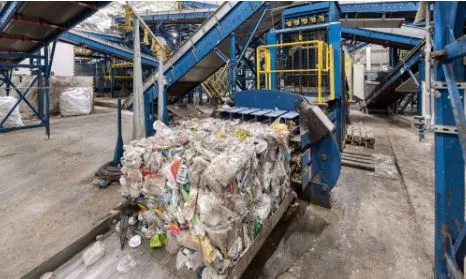Top 10 Issues Impacting Real Estate In 2025
The real estate industry has experienced a fair share of disruptions since the year 2020. This disruption stemmed from pandemic-driven market transitions, the steepest interest rate hikes, and record-high inflation in decades. However, as the new year begins, most analysts are optimistic as mortgage rates are starting to decrease and home prices are growing moderately. The overall confidence begins to enhance in both the residential and commercial markets.
The reality is that most industry challenges continue to obstruct growth for real estate businesses. Let us learn how the following top 10 issues are impacting the real estate industry in 2025.
1. Political Uncertainty
The recent elections in more than 70 countries may shake up an already volatile geopolitical landscape. In particular, the US elections will have a major influence on trade, regulation, immigration policy, sustainability, and corporate taxes.
There could also be discussions over changes to tax benefits and property values. Because of this uncertainty, real estate decisions and deals become more complex. The investors may wait until the interest rates and the economy become more stable.
2. High Financing Costs
Interest rates started to decline in the fall, but they are still relatively high, which is making buyers more cautious. It is difficult to evaluate deals and property values. Many property owners are unwilling to sell, while purchasers remain cautious because of the high rates. They are also expecting that there will be more discounted properties available as loans come due.
It is important for buyers to stay cautious and prioritize deals that offer better value in return. There are chances that a stronger return to the market activity in this area probably will not happen for another couple of years.
3. Loan Maturities Deadlines
By the end of 2026, close to $1.8 trillion in commercial property loans will be due. While many lenders are giving more time in expectations that the market increases, this may not last since banks encounter rules and regulations, and limited funds.
According to CRE, “the current situation could start to influence competition and keep tenants across various types of properties.”
4. Geopolitics and Regional Wars
The ongoing global issues may contribute to causing issues like rising prices, worker shortages, and supply delays. These conflicts are in different regions of the world like Ukraine and Gaza. Investors are likely to hope for higher returns to make up for the further risk and may no longer rely on the previous trends.
5. Insurance Costs
“Natural disasters caused $380 billion in destruction in 2023. However, a very small portion was covered by insurance. Insurance rates are increasing due to severe inflation, weather, and higher property values.
The residential, senior living, and hospitality properties are facing the impact the most, with more claims being filed. The traditional way of purchasing insurance is transitioning, as property owners now prioritize more on adjusting coverage and managing risks. They are also looking for new ways to manage growing costs.” Brian Bosscher, owner and founder of Condo Control
6. Housing Affordability
Housing is becoming more affordable as rates are rising and the country encounters a shortage of about 4.4 million homes. While rent growth has slowed, they are still up 45% over the past 15 years. Although more housing is being constructed, most of them are in big cities and still do not meet overall demand.
Almost 54% of renters are now spending over 30% of their income on housing. It is considered as a financial strain. With more young people looking to rent and with fewer new apartment projects, the report warns that housing affordability may get worse in 2025. It encourages the need to build more homes and secure lower-cost housing options.
7. Sustainability
“More frequent wildfires, floods, and hurricanes have led to significant damage to properties. Experts say there is a growing demand to make buildings more sustainable and better able to manage climate-related risks. However, in the US, the rules and regulations around this are still mostly unorganized.” Daniel Cabrera, Owner and Founder of Fire Damage House Buyer
Whereas Europe has introduced tougher sustainability standards, such as energy efficiency rules and new reporting requirements. The need to prioritize sustainability in real estate has never been more transparent and clear. It is especially after the huge financial losses caused by severe weather last year, which are also driving up insurance costs.
8. Pricing Gap Expectations
Buyers and sellers have not been agreeing and understanding when it comes to asset rates. However considering the worst of the rate declines in the past, pricing gaps will probably narrow and pricing shock is dispersing.
Pricing declines, particularly in areas like core business districts, are showing. It offers a hope for stabilization for investors, buyers, and sellers. Furthermore, it also shows that pricing is trending towards advancements across property types.
9. Artificial Intelligence
Although it is easy to get lost in the chatter surrounding AI, there is a growing demand that major work still needs to be done. AI functions on algorithms, and quality inputs to those algorithms are important in driving effective data-driven results.
Accuracy, granularity, and timelines are at the forefront of use of AI in real estate. The crucial part is in the input accuracy. The real estate industry needs to consider every factor and not completely rely on AI predictions and analytics.
10. Inefficient Lease Management
“Managing multiple leases across different properties requires careful tracking of key terms, obligations, and data. For instance, real estate firms must track lease expirations, rent escalations, maintenance responsibilities, and renewal options. They should also ensure compliance with regulatory demands and lease terms.” John Gill, Operations Director at Easy Concrete Supply
Proper lease accounting is also essential as organizations track both future commitments and current obligations across their portfolios. These may include tenant improvements, revenue recognition, and escalating rents.
How Technology Helps Overcome Real Estate Challenges
Using the right technological solutions, real estate firms can navigate their internal challenges and help manage the external ones that are beyond their control. Here are some ways technology can help solve real estate challenges.
- Automate Repetitive Tasks: Automation tools streamline time-draining, mundane tasks. These may be data entry and document management. The employees can be free in this way to prioritize higher-value work like building client relationships and generating leads.
- Enhance Data Management and Analysis: With an AI-backed advanced analytics and centralized data storage system, firms can have valuable data insights at the ready. With this real-time intelligence, companies can identify market trends and make informed portfolio decisions.
- Improve Communication and Collaboration: Digital platforms simplify interaction among all parties in a real estate transaction. Secure messaging systems and videoconferencing facilitate efficient communication, regardless of the location of stakeholders. Electronic signature capabilities and client portals further streamline transaction administration by offering secure document sharing and quicker contract execution.
Conclusion
The real estate industry encounters a load of internal and external challenges as it progresses in the year 2025. They may include operational hurdles like inaccurate financial reporting and fragmented data systems. There are also broader market pressures like housing affordability concerns and interest rates.
Companies that take a proactive strategy to address these challenges through process improvement, strategic planning, and technological solutions can create resilience against market uncertainties while building opportunities for future expansion.






